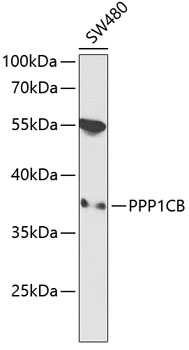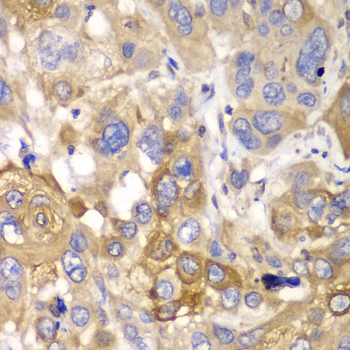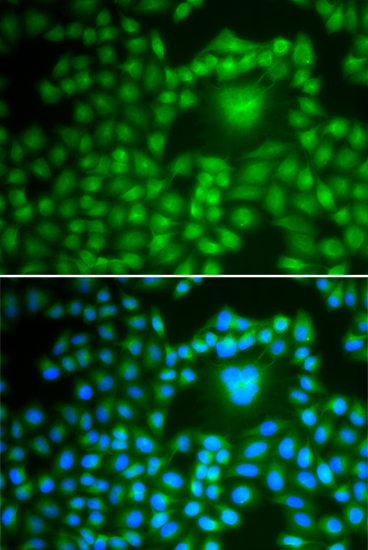-
Product Name
PPP1CB Polyclonal Antibody
- Documents
-
Description
Polyclonal antibody to PPP1CB
-
Tested applications
WB, IHC, IF
-
Species reactivity
Human
-
Alternative names
PPP1CB antibody; HEL-S-80p antibody; PP-1B antibody; PP1B antibody; PP1beta antibody; PPP1CD antibody; NSLH2 antibody; protein phosphatase 1 catalytic subunit beta antibody
-
Isotype
Rabbit IgG
-
Preparation
Antigen: Recombinant fusion protein containing a sequence corresponding to amino acids 1-327 of human PPP1CB (NP_002700.1).
-
Clonality
Polyclonal
-
Formulation
PBS with 0.02% sodium azide, 50% glycerol, pH7.3.
-
Storage instructions
Store at -20℃. Avoid freeze / thaw cycles.
-
Applications
WB 1:500 - 1:2000
IHC 1:50 - 1:200
IF 1:50 - 1:200 -
Validations

Western blot - PPP1CB Polyclonal Antibody
Western blot analysis of extracts of SW480 cells, using PPP1CB antibody at 1:1000 dilution.Secondary antibody: HRP Goat Anti-Rabbit IgG (H+L) at 1:10000 dilution.Lysates/proteins: 25ug per lane.Blocking buffer: 3% nonfat dry milk in TBST.

Immunohistochemistry - PPP1CB Polyclonal Antibody
Immunohistochemistry of paraffin-embedded human esophageal cancer using PPP1CB antibody at dilution of 1:100 (40x lens).

Immunofluorescence - PPP1CB Polyclonal Antibody
Immunofluorescence analysis of U2OS cells using PPP1CB antibody . Blue: DAPI for nuclear staining.
-
Background
Protein phosphatase that associates with over 200 regulatory proteins to form highly specific holoenzymes which dephosphorylate hundreds of biological targets. Protein phosphatase (PP1) is essential for cell division, it participates in the regulation of glycogen metabolism, muscle contractility and protein synthesis. Involved in regulation of ionic conductances and long-term synaptic plasticity. Component of the PTW/PP1 phosphatase complex, which plays a role in the control of chromatin structure and cell cycle progression during the transition from mitosis into interphase. In balance with CSNK1D and CSNK1E, determines the circadian period length, through the regulation of the speed and rhythmicity of PER1 and PER2 phosphorylation. May dephosphorylate CSNK1D and CSNK1E. Dephosphorylates the 'Ser-418' residue of FOXP3 in regulatory T-cells (Treg) from patients with rheumatoid arthritis, thereby inactivating FOXP3 and rendering Treg cells functionally defective.
Related Products / Services
Please note: All products are "FOR RESEARCH USE ONLY AND ARE NOT INTENDED FOR DIAGNOSTIC OR THERAPEUTIC USE"
